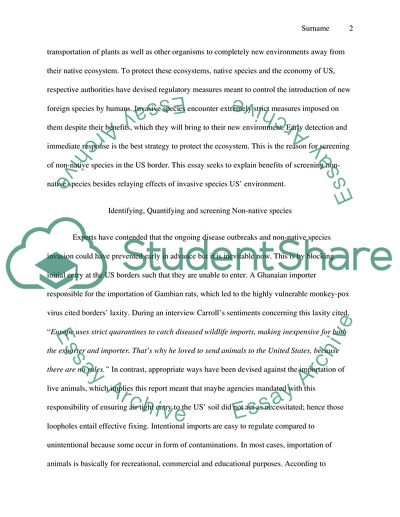Cite this document
(Screening of Non- Nnative Species in US Border Research Paper, n.d.)
Screening of Non- Nnative Species in US Border Research Paper. Retrieved from https://studentshare.org/geography/1813386-non-native-species-should-be-screened-at-us-border
Screening of Non- Nnative Species in US Border Research Paper. Retrieved from https://studentshare.org/geography/1813386-non-native-species-should-be-screened-at-us-border
(Screening of Non- Nnative Species in US Border Research Paper)
Screening of Non- Nnative Species in US Border Research Paper. https://studentshare.org/geography/1813386-non-native-species-should-be-screened-at-us-border.
Screening of Non- Nnative Species in US Border Research Paper. https://studentshare.org/geography/1813386-non-native-species-should-be-screened-at-us-border.
“Screening of Non- Nnative Species in US Border Research Paper”, n.d. https://studentshare.org/geography/1813386-non-native-species-should-be-screened-at-us-border.


